If you are in the market for a mattress that won’t off-gas, here are the most important green mattress certifications you need to know about.
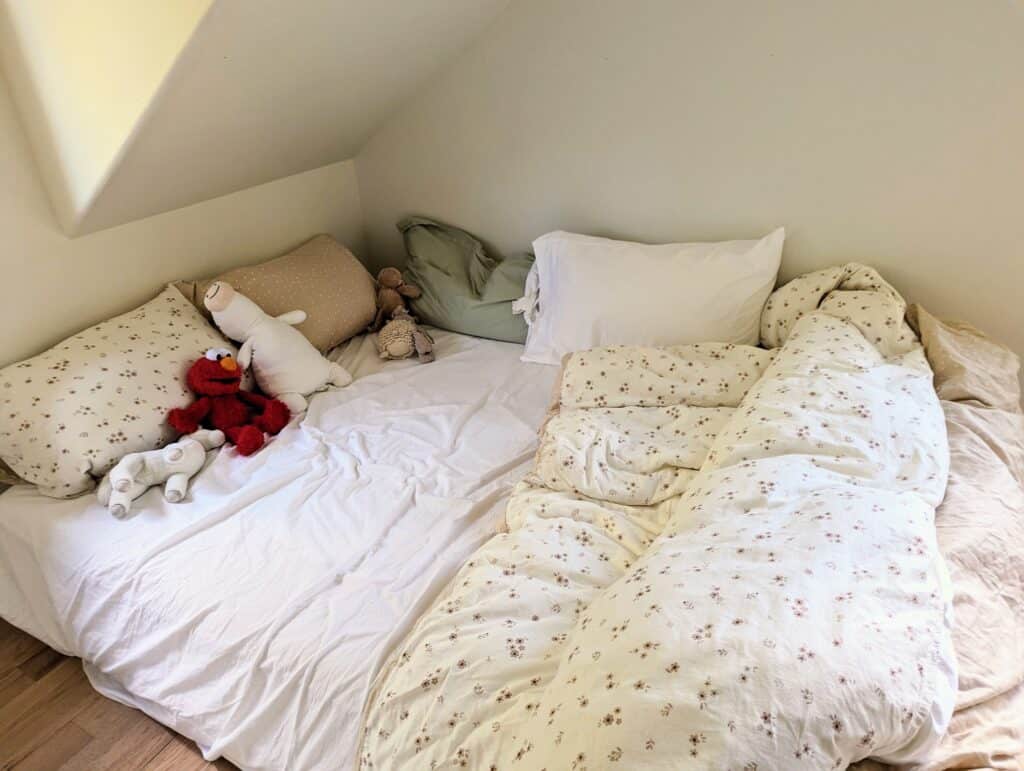
Table of Contents
Why green mattress certifications matter
When it comes to mattresses, it pays to be even more careful about certifications and eco-credentials. Most mattresses are a major purchase and one you’ll hopefully only make every decade or so.
This means that, if you buy a dud, you may be stuck with it for a while.
The other reason to keep your wits about you when buying a new mattress is that mattress companies can be especially unscrupulous.
Expect a lot of greenwashing and hype, with brands hoping to convince you their products are much more eco-friendly and non-toxic than they really are.
The good news is that there are some genuinely helpful certifications to look for when choosing a non-toxic, eco-friendly mattress.
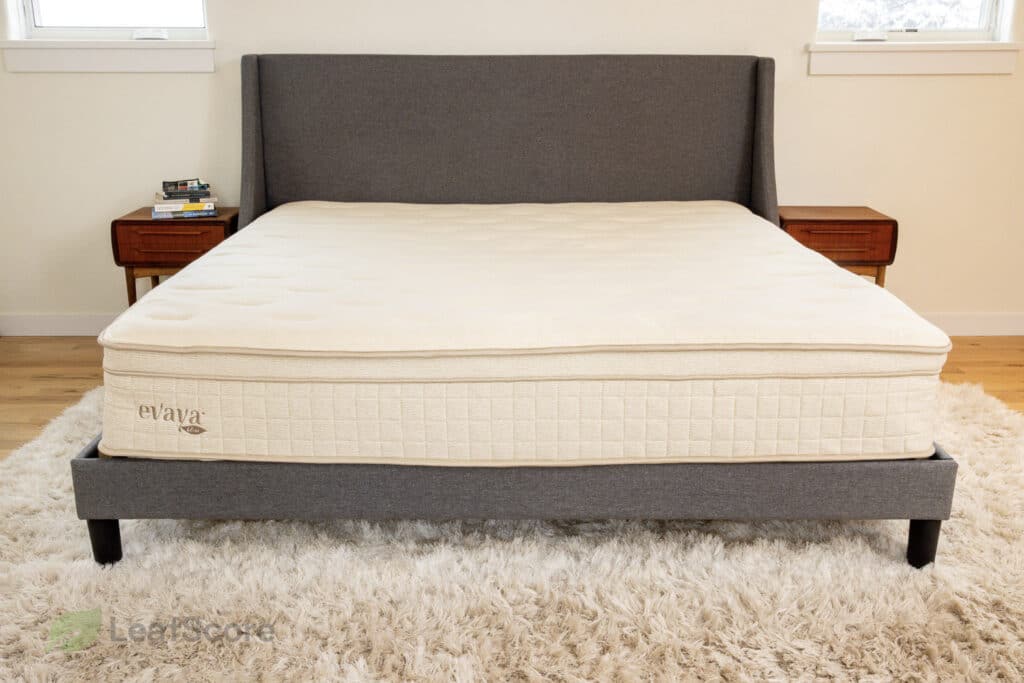
Mattress Certifications We Trust
Made SafeTM

MADE SAFE is a relatively new certification, having got its start in 2015. So far, just a handful of mattress companies have achieved this robust certification that focuses on human health and ecosystem safety.
The independent certification is rigorous and scientific, screening products for more than 6,500 banned or Restricted List substances. The basic idea is to go beyond just being free of the worst offending chemicals and to certify instead only those products that don’t harm people or planet in any way.
This certification has a Red List that is significantly larger than the European Union’s restricted list of substances and hundreds of times larger than the lists of substances restricted by the U.S. Food & Drug Administration and the Environmental Protection Agency combined.
Made Safe certification requires serious transparency from manufacturers and looks at a product’s potential impact on soil, sediment, air, water, and human, aquatic and terrestrial life. Those products that pass do not contain:
- Known or probable carcinogens
- Endocrine disruptors
- Behavioral, developmental, neurological, reproductive, or teratogenic toxins
- Hazardous flame retardants
- High-risk pesticides
- Toxic solvents
- Harmful VOCs.
As of April 2023, the following mattress companies have achieved Made Safe status for at least one, if not all, products:
Eco-INSTITUT
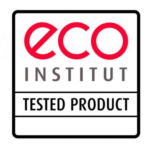
The Eco Institute, located in Cologne, Germany, is an independent organization that has more than 25 years of experience testing products for the presence of pollutants and emissions, even in trace amounts. If a product is Eco-INSTITUT certified, you can be assured that it does not contain even trace amounts of hazardous chemicals and will not off-gas undesirable chemicals and odors into your home. Some of the chemicals the Eco-INSTITUT certification rules out include volatile organic compounds (VOCs), phthalates, formaldehyde, pesticides, heavy metals, and persistent organic pollutants.
Eco-INSTITUT is a more robust and stringent certification than GOTS and many others, so if a product carries this, it’s a good sign. The Evaya Bliss is one of our favorite mattresses that carries this certification.
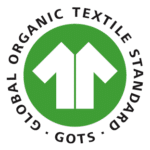
Global Organic Textile Standard (GOTS)
GOTS requires that at least 95 percent of the materials in a mattress are organic. It also prohibits outright the use of certain substances, including for the 5 percent of non-organic materials.
GOTS products cannot contain polyurethane, chemical flame retardants, and any of the most egregious chemicals often used in mattresses. All of the product in our online store are GOTS certified and we display our GOTS label and reference number on the LeafScore Essentials About page.
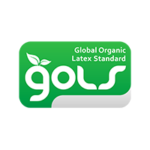
Global Organic Latex Standard (GOLS)
GOLS ensures that a latex mattress comprises at least 95 percent organic latex. As with GOTS, GOLS restricts the other 5 percent of the mattress’s components. Natural-latex mattresses may have both the GOTS and GOLS labels.
Honorable Mention
The certifications above are the main ones to look for when buying a mattress. However, there are several other certifications that you might want to know about to further inform your purchasing decisions. These include niche certifications and older certification programs that have been surpassed by more robust programs.
Greenguard and Greenguard Gold
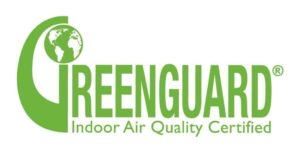
Greenguard is one of the most common green certifications. It requires a final product to meet specific emission limits for formaldehyde and other volatile organic compounds. Greenguard Gold has more stringent emission limits for VOCs.
Both standards were developed by UL Environment and Greenguard worked with ANSI to become an official standard-setting organization. Neither certification offers reassurance that a product is free from toxic chemicals, however. These certifications also lack a social or animal ethics component.
As an example of things done right, OMI’s mattresses are Greenguard Gold certified and qualify under the U.S. Environmental Protection Agency’s LEED indoor-air-quality program. They offer a printout of their mattress emissions on the UL/Greenguard website here.
Green America
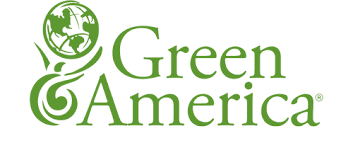
Green America certifies businesses that actively use their business as a tool for positive social change. To be certified with Green America a business must also:
- Operate a “values-driven” enterprise according to principles of social justice AND environmental sustainability;
- Demonstrate environmentally responsible practices in the way they source, manufacture, and market their products and run their operations and facilities;
- Be socially equitable and committed to extraordinary practices that benefit workers, customers, communities, and the environment; and
- Be accountable for their work by continually improving and tracking their progress and operating with transparency in every facet of their business
Green America has been evaluating and certifying small businesses since 1982. It regularly works with some of our favorite mattress companies, including PlushBeds.
Green America Gold certification applies only to companies that are industry leaders for responsible, sustainable business practices.
Oeko-Tex Standard 100
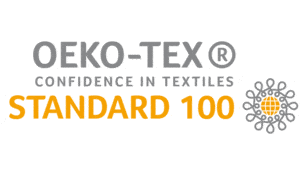
Oeko-Tex Standard 100 lays out limits for the emission of harmful chemicals such as formaldehyde and other volatile organic compounds (VOCs). It also outright bans the use of certain chemical flame retardants, colorants, and allergenic dyes.
Oeko-Tex does not, however, offer any guidance on whether materials are organic or sustainably sourced. It’s also unclear in many cases if the certification applies to the entire product or just a single component.
The certification process for the OEKO TEX Certification is fairly robust and includes testing for a variety of hazardous chemicals, pesticides, phthalates, lead, arsenic, and other heavy metals. If a mattress carries this certification, it does not contain:
- Chlorinated phenols
- Carcinogenic dyes
- AZO dyes
- Allergy inducing dyes
- VOCs
The OEKO TEX Standard 100 Certification is voluntary and requires annual updates to remain active. Many companies are slow to update certificates on their websites, so if you see a certificate that’s out of date, don’t dismiss the company out of hand. Instead, ask if an updated certificate is available.
Cradle to Cradle Certification
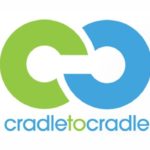
Cradle to Cradle is one of the best eco certification programs around but hasn’t taken off in the mattress industry. This is likely because the certification is expensive and mattress makers tend to focus their investment on GOLS and GOTS instead.
Cradle to Cradle is both independent and fairly robust, offering various levels of certification for products. The Cradle to Cradle Products Innovation Institute is a non-profit organization, making this a third-party certification program.
Cradle to Cradle demonstrate that good green credentials are not the only considerations when buying bedding. The ‘social fairness’ component offers assurance that a mattress was not made using child labor or other exploitative working practices, for instance.
The Cradle to Cradle Certified™ Product Standard applies to products that are sustainable, eco-friendly, and made by manufacturers who demonstrate continual improvement in environmentally friendly industry practices. Products must meet strict criteria for water use and sustainable energy in manufacturing, for instance, as well as levels of VOCs in the final product.
Material assessment and c2c ratings
Cradle to Cradle have developed a Material Assessment Rating System called ABC-X:
- A – The material is ideal from a Cradle to Cradle perspective for the product in question.
- B – The material supports largely Cradle to Cradle objectives for the product.
- C – Moderately problematic properties of the material. The material is still acceptable for use.
- X – Highly problematic properties of the material. Should be phased out
Cradle to Cradle certification levels comprise:
- Basic
- Bronze
- Silver
- Gold
- Platinum
At the Gold and Platinum levels, products are certified as free from X materials. Platinum level also requires that the product has a Material Reutilization Score of 100, and that the product is actively being recovered and cycled in a technical or biological metabolism. In addition, Platinum certification requires that:
Renewable Energy and Carbon Management
- For the final manufacturing stage of the product, >100% of purchased electricity is renewably sourced or offset with renewable energy projects, and >100% of direct on-site emissions are offset.
- The embodied energy associated with the product from Cradle to Gate is characterized and quantified, and a strategy to optimize is developed. At re-application, progress on the optimization plan is demonstrated.
- ≥ 5% of the embodied energy associated with the product from Cradle to Gate is covered by offsets or otherwise addressed (e.g., through projects with suppliers, product re-design, savings during the use phase, etc.)
Water Stewardship
- All water leaving the manufacturing facility meets drinking water quality standards
Social Fairness
- A facility-level audit is completed by a third party against an internationally recognized social responsibility program (e.g., SA8000 standard or B-Corp)
- All Silver-Level requirements are complete.
Mattresses and c2c
Several companies now use c2c Gold certified Talalay latex.
The company Swiss Dream Beds, for instance, uses c2c Vita Talalay latex in its mattresses and has several other robust eco-certifications. Savvy Rest also uses c2c Talalay in its Serenity and Serenity Spring mattresses, among others.
Formaldehyde Free Verified
Some mattress products have been validated by the Underwriters Laboratories (UL) Environment Certification Program to meet the UL formaldehyde-free standard. UL develops a variety of standards to measure and validate performance, environmental health and sustainability. Naturepedic and Avocado are two of the few companies to attain this certification.
USDA/NOP
There is still no USDA organic standard for manufactured mattress cores but USDA/NOP certification does provide a third-party raw-material assurance for latex sap. This is awarded under the National Organics Program (NOP).
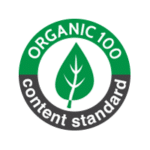
American-Grown NOP-Certified Organic Cotton and Oregon Tilth (OTCO)
Organic cotton may carry certification from GOTS, Oregon Tilth (as OTCO), or another member of the USDA National Organic Program (NOP). This certification offers assurance that cotton production compies with organic growing and handling standards.
OCS100 Organic Content Standard
The Organic Exchange Certification Program ensures proper tracking of organic material from its source to the finished product. A legitimate, up-to-date certificate demonstrates that the organic fiber in a product has been independently verified.
Non-GMO Verified
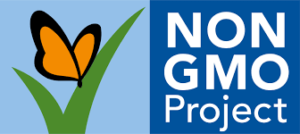
Non-GMO Project certification applies to products made without genetically engineered ingredients. These products have been verified non-GMO through independent review.
Genetic modification (GM) can have significant negative effects on farmers’ livelihoods, the use of pesticides, and on biodiversity.
Certified organic materials and mattresses are necessarily non-GMO. As such, you’ll only need to look for a Non-GMO Project certification for plant-based foam products. Most soy grown in the U.S. is a GMO.
Wool certifications
While wool isn’t ever vegan-friendly, some sources of wool are considerably better regarding animal welfare.
In the US, wool marked with the PureGrow™ label comes from Californian farms that practice sustainable sheep ranching.
EcoWool is another excellent standard that provides reassurance that wool is sourced from small US farms where farmers manage their flocks humanely and care for the environment. Both EcoWool and PureGrow are arguably preferable to New Zealand wool in terms of animal welfare.
Wool certified USDA Organic is also a decent option as is any wool product with GOTS certification. To really up your eco game, look for organic wool that carries the European kfB certificate awarded to products made with wool sourced with minimal animal exploitation.
PureGrow
PureGrow™ Wool is a joint effort by the Natural Bedroom, the Sonoma County Wool Growers, the University of California Agricultural Extension and Debra Lynn Dadd to provide sources of wool produced with absolutely no chemicals, pesticides or artificial materials in the sheep’s environment. The pastures where sheep graze must be free of pesticides for a minimum of two years, and supplemental feeds must be organic. Inoculations must not contain synthetics or hormones. Farmers must take care to keep the wool free of dirt, dust and pests without using chemical processes and while maintaining uniform quality. This applies throughout shearing, packing, cleaning, and carding.
Put simply, PureGrow wool is sheared from live, healthy sheep and gently processed without chemicals. This protocol was established around 1993 by a sheep rancher called Joe Pozzi working in Sonoma County, California. The stringent controls have now been adopted and certified by more than 50 ranchers, guaranteeing that woolen products are scrupulously cleaned and created without bleaches, formaldehyde, dyes, or animal cruelty.
kbA and kbT
Products made and/or sold in Europe may carry kbA and/or kbT certifications. The former certifies that the product is made with organic cotton and the latter translates roughly to ‘controlled organic livestock’. This means that materials come from suppliers using organic farming methods ‘optimally adapted to the climatic and living conditions of the region’ and using ‘species-appropriate animal husbandry in harmony with nature’ (R).
The kbT certification prohibits:
- Genetically modified foods or fattening aids
- Forced reproduction of the animals
- Tail docking or mulesing
- Pesticides and insecticides, on the animals and land where animals graze.
Final thoughts on mattress certifications
There’s a lot to think about when looking for meaningful mattress certifications. Some certifications are tantamount to greenwashing. Others offer robust reassurance that a mattress is sustainably made using natural, safe, and eco-friendly materials.
Now that you know what to look for in terms of mattress certifications, read up on eco-friendly mattress materials. Or check out the rest of the Leaf Score Guide to Mattresses to find a new mattress that’s right for your sleep needs.